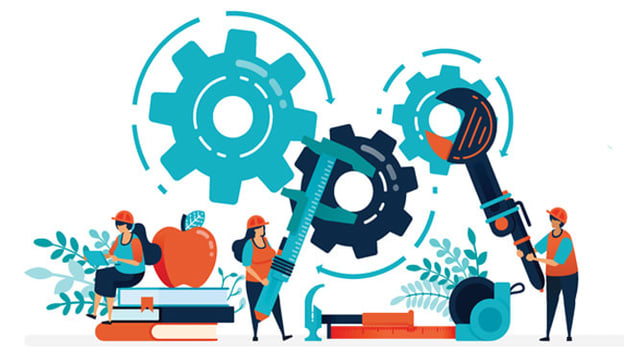Reinventing HR in the manufacturing sector in 2022

The year 2021 was a major disruptor not just from the business standpoint but for Human Resources as well. From the initial shift towards the full remote working setting, numerous lockdowns, and multitude of health concerns faced by employees and their families, the year 2021 witnessed a sea change in the HR policies due to the pandemic. It was especially challenging for the Manufacturing industry as it requires the physical presence of the employees.
We ushered our workforces into a COVID-19 world of work from home, virtual meetings, and then slowly put our workplaces back together. These unprecedented crucial moments compelled us to act with lightning speed, and explore new options every second reshaping the workplace for ensuring work continuity and productivity.
A few HR trends that would prevail in 2022:
Effective Communication
The COVID-19 pandemic has forced HR professionals to rethink the way they communicate with employees. It has become crucial for organizations to offer clear, concise and continual communication which will enable employees to feel more prepared than panicked; and remain connected with the Organization.
Technological upskilling of the employees
incorporation of modern age technologies like Robotics and AI at the manufacturing plant would require that HR managers will have to drive specialized training programs to upgrade the technological capabilities of the existing employees and increase their productivity. HR leaders will need to understand the tech road map for their organizations and then update job descriptions and staffing plans to get where they want to reach.
Value-based assessment
Performance management systems will need to move from objective measurements to value-based assessments. New skills, competencies and attitudes are required to navigate today's changing workplace priorities. Pandemic-related competencies need to be brought in along with the core competencies. For instance, some of the pandemic related competencies crucial in today’s scenario are Change Management, Adaptability, Creativity & Innovation etc. Instead of rating an employee on the ability to produce numbers, a new evaluation may assess how the employee was able to improve efficiency by better programming and automation to achieve better numbers.
Prioritize wellness of employees
COVID-19 has changed the way businesses operate and has also provided a wealth of insights into employee wellness and how mental and emotional health in the workplace should be defined. It has become critical for organizations to take a human-centric approach to the employee experience. A proactive program every 4 weeks to check the status of employees by managers should help to monitor the situation and take corrective measures according to the situation.
Focus on employee retention
As attrition soars across India, putting strong employee retention strategies in place by organizations is of utmost importance. Also, by concentrating on employee engagement through meaningful work, goal setting, and communication, businesses can play a significant role in boosting employee morale and their long-term commitment to the company.
Positive atmosphere
Subsequently, establishing a positive work environment and building a culture that helps boost employee morale is what keeps them productive and engaged. Encouraging collaboration and communication at work, working closely with District and Community Health Centers by ensuring that Medical Advisories and Govt benefit schemes offered during this period reaches the factory workers effectively, planning social & cultural programs, recognizing, and rewarding employees and giving them some time off work, etc., are some ways the manufacturing industry can boost employee morale and encourage a cheerful, light-hearted, and fun atmosphere in the workplace that would ultimately lead to increased productivity of the employees.
Acquiring young talent
Manufacturing companies should recruit fresh talent. Engineering graduates, MBAs and proper utilization of Apprentices engaged under various disciplines is the need of the hour.
The pandemic has accelerated changes in the way the manufacturing industry works and the entire human resource function must respond in a coordinated way. The challenges that lie ahead in the year 2022, presents a unique opportunity for HR leaders to shape the future of work in ways not previously considered.














